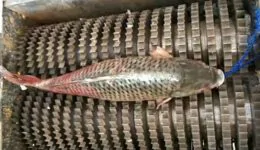American Money Factory: Us Dollar Banknotes Production Process
The video provides an overview of the production processes for both U.S. paper currency (Federal Reserve notes) and quarters, highlighting the meticulous steps involved in creating these forms of currency.
For Federal Reserve notes:
– Federal Reserve notes are issued by the Federal Reserve System in the United States.
– High-quality cotton and linen fibers are blended to create the durable paper used for currency.
– Watermarks and security threads are embedded in the paper for added security.
– The printing process involves offset printing, intaglio printing, and letterpress printing, resulting in sharp details and vibrant colors.
– Each note undergoes a numbering process to make it unique and identifiable.
– Quality inspectors carefully examine each note for physical defects.
– The sheets of notes are cut into individual bills.
– Bills are bundled in straps, typically 100 bills per strap.
– The currency is transported securely to various destinations for distribution.
For quarters:
– Quarters are made of a composition consisting of 75 percent copper and 25 percent nickel.
– Raw materials are extracted from mines and recycled sources.
– Coin blanks are cut from metal rolls, and any scrap is recycled.
– The coin blanks undergo a pressing process to lift their edges.
– A coin press stamps the base design on one side and the reverse on the other side.
– Inspectors ensure that the coins meet quality standards.
– Flawless coins are counted and packaged in bags, with each bag containing 200,000 quarters.
These processes demonstrate the precision and attention to detail involved in producing U.S. currency and quarters, ensuring their quality and security for everyday use.
What did you think? Please leave a comment in the section below and remember to share the video and sign up for our free newsletter!




